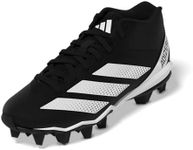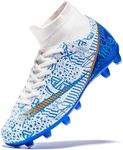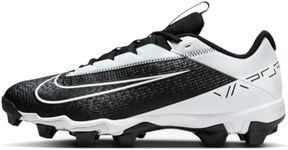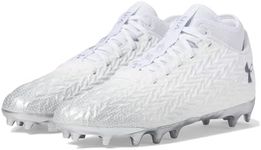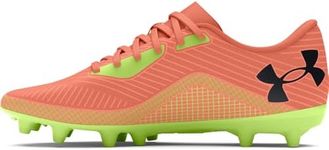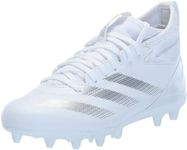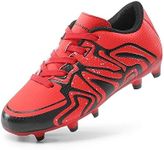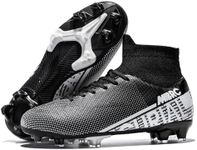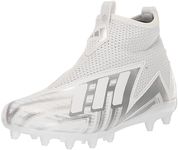Buying Guide for the Best Youth Football Cleats
Choosing the right youth football cleats is essential for young players to perform their best on the field. The right pair of cleats can provide the necessary support, traction, and comfort, helping to prevent injuries and improve performance. When selecting football cleats, it's important to consider several key specifications to ensure the best fit for the player's needs and playing style.Type of CleatsFootball cleats come in different types based on the playing surface: molded cleats, detachable cleats, and turf shoes. Molded cleats have non-removable studs and are suitable for most field conditions, offering durability and versatility. Detachable cleats have studs that can be changed based on field conditions, providing customization for optimal traction. Turf shoes have small rubber studs and are designed for artificial turf surfaces, offering better grip and comfort. Choose the type based on the primary playing surface to ensure the best performance and safety.
MaterialCleats are made from various materials, including leather, synthetic, and mesh. Leather cleats offer durability and a snug fit, but they can be heavier and require more maintenance. Synthetic cleats are lighter and often more affordable, providing good durability and easier upkeep. Mesh cleats offer breathability and lightweight comfort, ideal for hot weather but may lack durability. Consider the player's comfort preferences and the typical weather conditions when choosing the material.
Fit and ComfortThe fit and comfort of football cleats are crucial for preventing blisters and ensuring optimal performance. Cleats should fit snugly but not too tight, allowing for natural foot movement. Look for features like padded insoles, heel counters, and adjustable laces to enhance comfort. Trying on cleats with the same type of socks worn during games can help ensure the best fit. Prioritize comfort to keep the player focused on the game rather than on foot discomfort.
Ankle SupportFootball cleats come in different ankle heights: low-cut, mid-cut, and high-cut. Low-cut cleats offer maximum mobility and are lighter, suitable for skill positions like wide receivers and running backs. Mid-cut cleats provide a balance of mobility and support, ideal for players who need both speed and stability. High-cut cleats offer the most ankle support, perfect for linemen and players who need extra protection. Choose the ankle height based on the player's position and need for support versus mobility.
TractionTraction is essential for maintaining stability and preventing slips on the field. Cleats with longer studs provide better grip on soft or muddy fields, while shorter studs are suitable for firm ground. Some cleats have a combination of stud lengths for versatility. Consider the typical field conditions and the player's position when selecting cleats with the appropriate traction to ensure optimal performance.
WeightThe weight of football cleats can affect a player's speed and agility. Lighter cleats are ideal for skill positions that require quick movements, while heavier cleats may offer more durability and support for positions that involve more physical contact. Balance the need for speed with the need for support based on the player's position and playing style.
